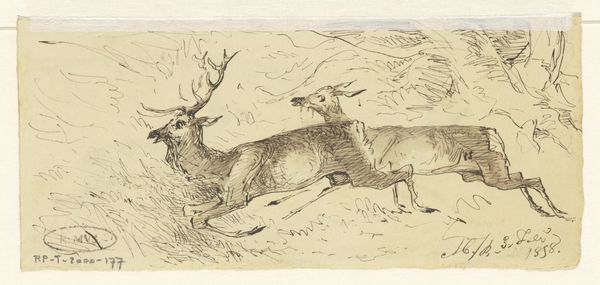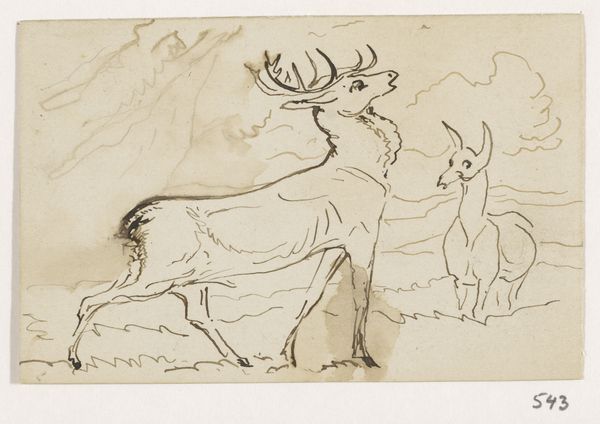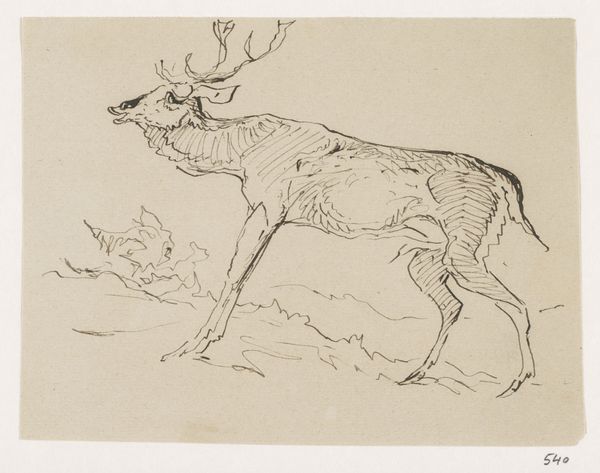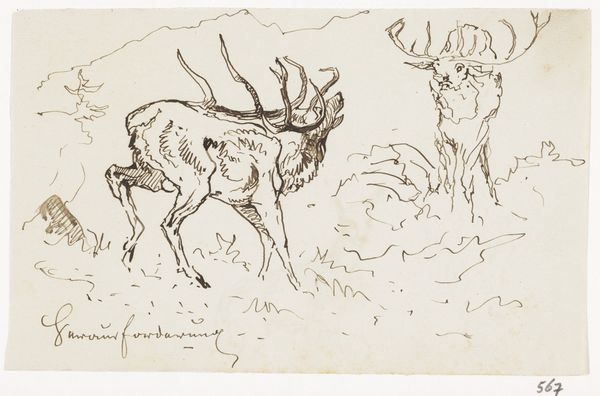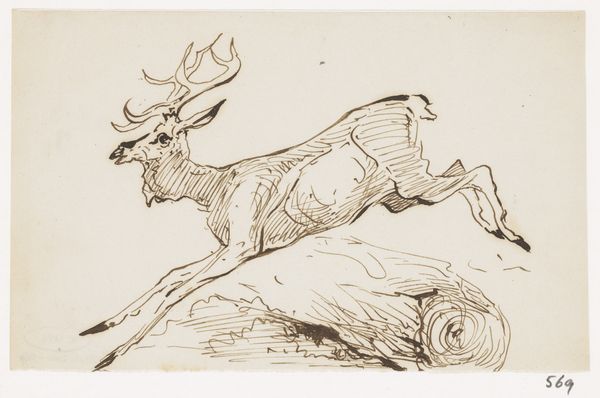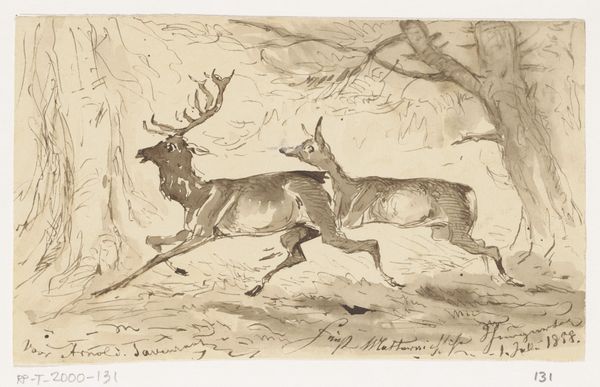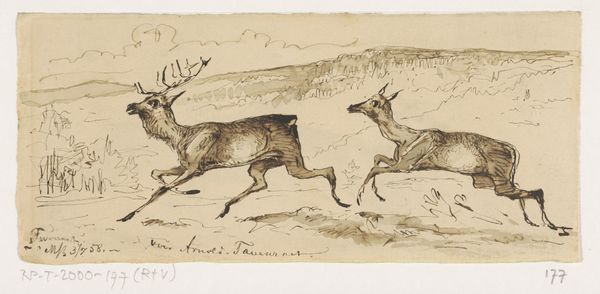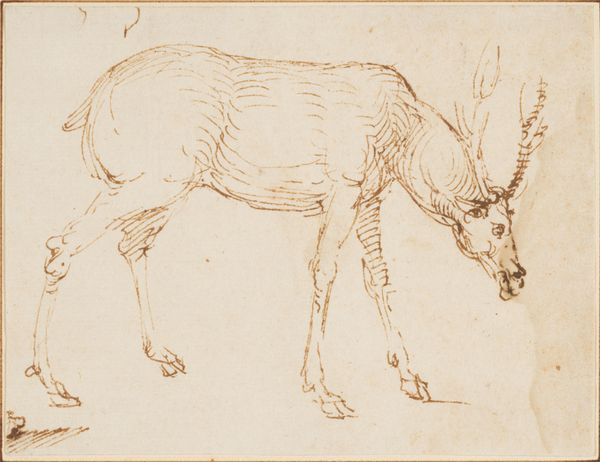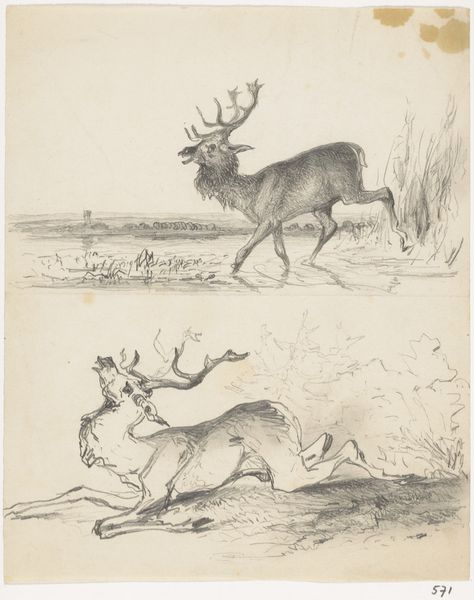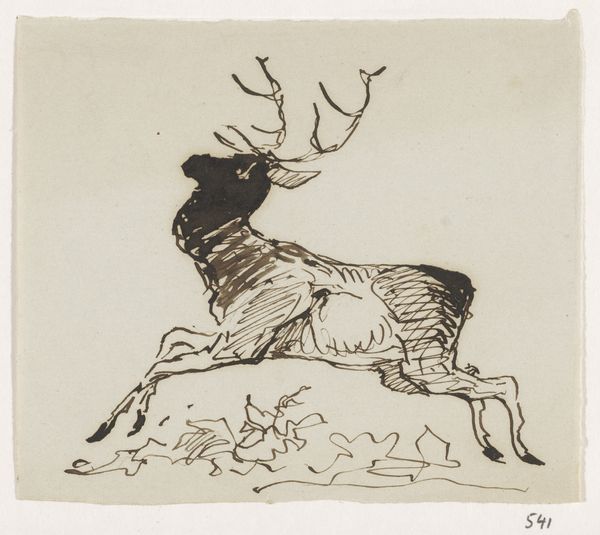
Dimensions: height 123 mm, width 142 mm
Copyright: Rijks Museum: Open Domain
Editor: Here we have Johannes Tavenraat’s "Twee Herten," made sometime between 1840 and 1880 using ink on paper. I find it kind of haunting, particularly the way the artist depicts the anatomy of the deer with what looks like internal markings, like blueprints of their forms. How do you interpret this work? Curator: It’s interesting that you say haunting. I see this work as an opportunity to investigate humanity’s fraught relationship with the natural world, and the ways we project our own narratives onto animals. Think about the Romantic era; it was all about the sublime power of nature, but also a time of burgeoning industrialization and a growing disconnect from the land. Editor: So, are you suggesting that this drawing is a critique of that disconnect? Curator: Possibly, or maybe it is an illustration of this evolving and complicated relationship. Tavenraat’s choice of deer is key here. Deer have historically symbolized both untamed wilderness and vulnerability, often hunted or displaced. In a broader sense, who gets to claim ownership or belonging within landscapes, both literal and metaphorical, becomes a salient theme, wouldn't you agree? Editor: That makes me think about contemporary issues like habitat loss and species extinction. The way you position art in current, critical conversations is insightful. It takes art history out of a dusty, untouchable past and connects it to urgent, modern concerns. Curator: Precisely! And by considering such intersections of art and environment, we begin questioning not only the legacy of romanticism but also contemporary ethical obligations. Looking at seemingly simple works, we find ourselves confronting much larger social concerns.
Comments
No comments
Be the first to comment and join the conversation on the ultimate creative platform.

